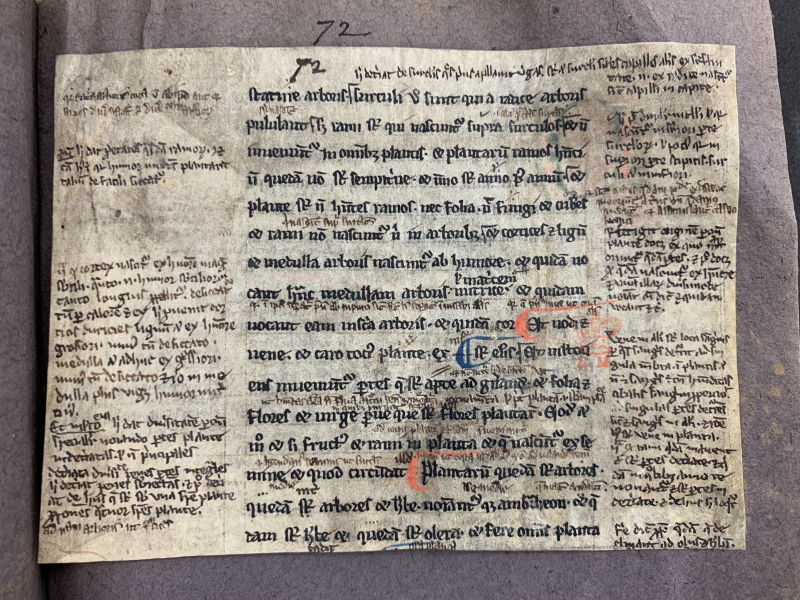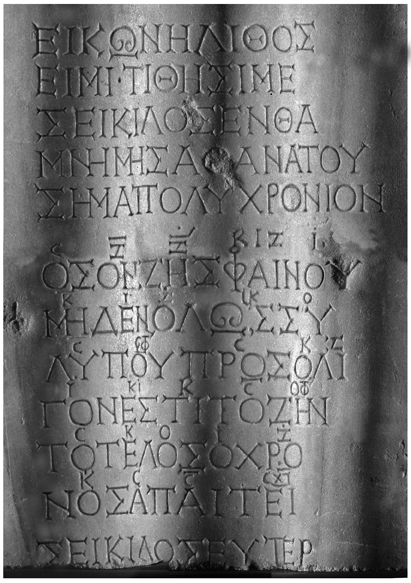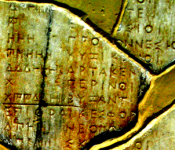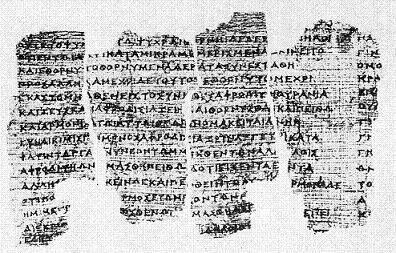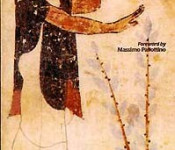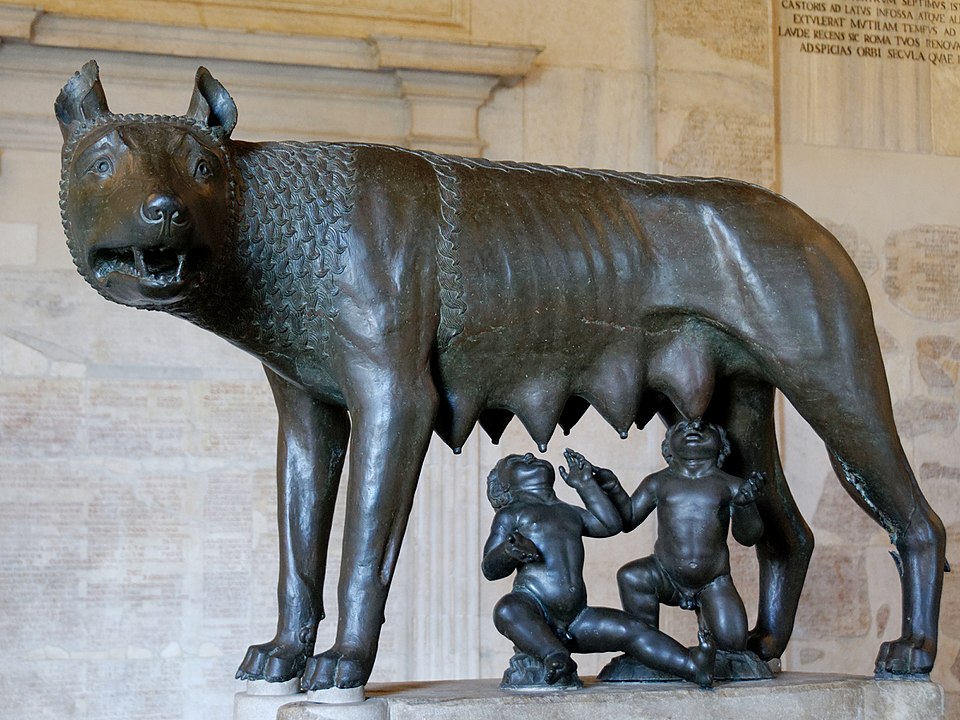Learning from 40 AC Book Bios “Καῖσαρ” Kai-Caros (in Slavic "Like the King") Bio of Caesar
Sunday 27 September 2020 at 5:55 pm
Nicolaus of Damascus Book Bios “Καῖσαρ” KaiCaros (in Slavic "Like the King") Bio of Ceazar
The Ancient Greek historian Nikolas or Nicolaus of Damascus (Greek: Νικόλαος Δαμασκηνός) was a historian and philosopher with a Slavic name who lived during the Augustan age of the so-called Roman Empire. He was born in 64 BC. Nicolaus was the son of wealthy parents, and historians suggest that he was of Macedonian origin. At those days Orphism was at its peak within the region.
A fragment from Alfredus the Englishman’s translation of Nicolaus of Damascus’ work on plants, now lost, which incorporates material from Aristotle’s De Plantis, also lost. Alfredus translated Nicolaus’ book from Arabic, which had been translated from Syriac, which had been translated in turn from Greek: Harley MS 5414, f. 72
He was an intimate friend of Herod the Great (Cezar). According to Sophronius, he was also the tutor of the children of Mark Antony and Cleopatra. He was commissioned for his work. He wrote a universal history in 144 books. His work was mainly lost. Extensive fragments of the first seven books are preserved, these cover the history of the Assyrians, Medes, Greeks, Lydians, and Persians.
The Book 4 of his History was on A-bra-Ham (the monotheism, the Monad), so the historians have named him “a Jew”. However, he has done a work called “On the Psyche”, so he could have also been a Pythagorean or Platonist.
Nikolas wrote "A Life of Augustus", Caesar (Bios *“Καῖσαρ” KaiCaros = pronounced as “Bios kai Caros”)
Nikolai writes the name of Cezar, in Ancient Homerian Greek as “Καῖσαρ” “Καίσαρος”, “Καίσαρι” sounding as: Kai Caros (meaning in Slavic "kao Car", or "as the King", the Slavic supreme ruler is “Car”) “Καίσαρ” became in Latin "Cezar".
Read more
Ba of Sha or Soul of Isis
Saturday 29 August 2020 at 6:46 pm
Goddess Bastet (in Slavic BeŠTija) and the Egyptian Sacred City of Cats
The Temple of Bastet was built in 2950 BC at Sakkara, Alexandria, at Bubastis.
A goddess that had a cat as a symbol, represented by the sounds “Ba” and “Sha” was worshiped for thousands of years in ancient Egypt. The Ancient Egyptian: bꜣstjt, in Slavic BeŠTija, in Coptic: Ⲟⲩⲃⲁⲥⲧⲉ/ubastə/ was an angry Goddess.
The three papyri of the 200 BC tell us of a story of the daughter of Ra, living as a mighty lioness at south of Egypt in the glowing desert heat. She is a beast, not a benevolent Goddess, an angry lioness. To please her, the worshipers use the form of a baboon (unpolite and rude humans) and music, dance and alcohol.
A bronze statue the cat wears golden earrings and nose-ring and a silver wedjat (Eye of Horus). Around 600 BC from Saqqara, Egypt in The British Museum, London.
In the 18th century, the French scholars who accompanied Napoleon on his 1798 expedition to Egypt, located the temple in Cairo, known as Tell Basta with its city Bastet.
In 1906 while building a railroad, workmen hit on a treasure buried near the remains of the temple. The treasures of great value had a golden cup sculpted to resemble lotus petals bearing the name of the 1200 BC queen Tawosret (Ta-X-os-ReT) who was the queen of Egypt during the Trojan War. Scholars believe that the queen Alcandra (aleXandra) mentioned in Homer’s Odyssey was Tawosret.
Did you know that Ancient Egyptians used to have “tatoos” of symbols of Gods tatooed on their bodies?
Bꜣstjt or BeŠTiJa was within Greece worshipped as Artemis, Ba of Sha means a Soul of ISiS (Sha) with the addition of the second 'T' to denote the feminine.
Read more
Seikilos Epitaph The First Musical Composition Ancient Greece 100 AC
Saturday 01 August 2020 at 4:29 pm
The Seikilos epitaph is carved in marble stele dated 100 AC from Ancient Greece
Did you know that the Seikilos epitaph is carved in marble stele, or a column, with poetry and music that is the oldest surviving complete music composition?
Seikilos Epitaph The First Musical Composition Ancient Greece 100 AC at the Museum of Denmark
The melody with lyrics, in the ancient Greek musical notation, was found engraved on a tombstone from the Hellenistic town Tralles, not far from Ephesus in Turkey. The Epitaph was discovered in 1883 by Sir W. M. Ramsay, since it was lost to be rediscovered in 1922, Its base was sawn off straight so that it could stand as a pedestal for flowerpots. In 1966, it was acquired by the Museum of Denmark.
It is a Hellenistic song written in the Ionic dialect, that for me these days rings a bell as Eastern Greece or Alexander the Great or Macedonia or the famous Ancient Egyptian Rossetta Stone (with its 3 languages inscription) and many Ancient Greek scripts found in ancient Greek colonies in Egypt, Malta, Sicily.
Read more
Metamorphoses
Wednesday 20 May 2020 at 12:38 pm
Derveni Papyrus about Orphism and Ancient Greek gods
Metamorphoses. Transformation. A journey of a soul passing through Gaia, but also an epic poem in fifteen books written 2,000 years ago, by the Roman poet Ovid, completed in 8 AC inspired by the Ancient Greek Theogony Θεογονία “Birth of the Gods” attributed to Hesiod 700 BC, and the Derveni 500 BC.
The Oldest Greek Papyrus 500 BC Derveni Papyrus
The poet's writings are based on already fully established Ancient Greek manuscript tradition. Re-writing myths, the creation story, Ovid begins by describing how the elements emerge out of chaos, and how mankind degenerates from the Gold Age to the Silver Age to the Age of Iron. This is followed by an attempt by the giants (Titans) to seize the heavens, at which the God Jove sends a great flood which destroys all living things except one couple, Deucalion and Pyrrha.
The Metamorphoses, as a collection of myths is influenced by an earlier Greek work called the Theogony Θεογονία “Birth of the Gods” attributed to Hesiod 700 BC. It is a long narrative poem compiling Ancient Greek myths. Hesiod describes how the gods were created, their struggles with each other, and the nature of their divine rule. In the Theogony, the origin (arche / aRČe) is Chaos, a primordial condition, a gaping void (abyss), with the beginnings and the ends of the earth, sky, sea, gods, mankind. Symbolically associated with water, it is the source, origin, or root of things that exist. Then came Gaia (Earth), Tartarus (the cave like space under the earth), and Eros, who becomes the creator of the world.
Read more
Learning from D. H. Lawrence about Ancient Rome Goddess
Friday 03 April 2020 at 08:20 am
The City of Rome and the Great Mother goddess
It is in the nature of humankind to tell stories, and at the root of every culture we find myths and legends. A hellenistic myth considers Rome to be an Ancient Greek city, narrating a story of a Hellenic Gods and Goddesses. The city of Romolo e Remo, Venus and Mars, cats and dogs, the centre of the original conflict of a female Goddess based worship and a male God dominated rituals.
The story goes back to the Ancient Greece and the Great Mother who has all through the ancient history had a role of the Creator Goddess. Shakti if your wish, with her Kundalini force.
The Goddess of Quintessence: Sound
Lupa Capitolina: she-wolf with Romulus and Remus, Rome, Italy, 1300 AC (twins are a 1500 addition)
Read more
